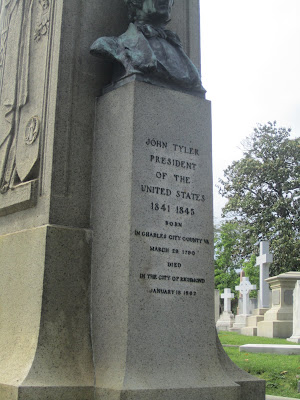I climbed up onto the Blue Ridge Parkway and traveled for 3 days and 150 miles--a trip that should have taken no more than 1 1/2 day unless you stop at every scenic pull-out along the way--which I did.

I saw deer and wild turkeys and a small furry animal that looked like a Colorado marmot or a very large prairie dog. Gopher, maybe?

I saw deer and wild turkeys and a small furry animal that looked like a Colorado marmot or a very large prairie dog. Gopher, maybe?

And all around me were the Great Smokies, the Blue Ridge mountains and the Appalachians while far below were the lush, fertile green valleys, tiny towns and Grandma Moses farms. And best of all, it was still before the start of tourist season so I had the drive all to myself except for an occasional farm truck on its way to the big city on the other side of the mountain.

Saying 'Goodbye' to the south means leaving behind: soft southern drawls, mustard greens and cornbread, genuinely friendly strangers, 19 year old store clerks who say, "yes, Ma'am", fried okra, moon pies, outrageously blooming azaleas, lazy bayous, and funny signs (see picture above).
Some of the best historical markers are in the south. I have seen two that marked the spots of duels but I was driving and couldn't get a picture for one and the second picture turned up out-of-focus. And if I stopped for every historical marker I would still be in Louisiana. This one above was one of my favorites. It was located right outside Appomattox and please note that Major General Jeb Stuart had his own personal banjo picker--truly a southern general. I guess Sigh Me is my own personal purring serenader.
































































